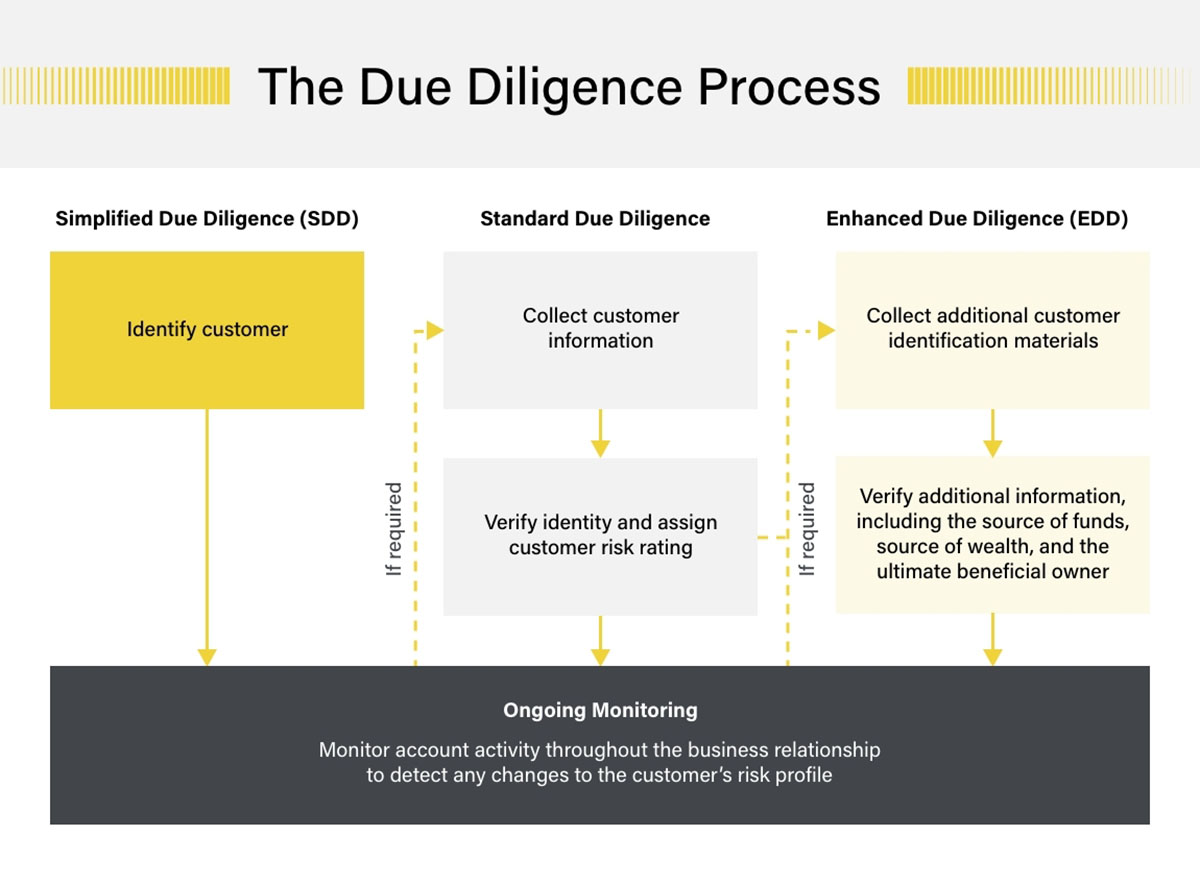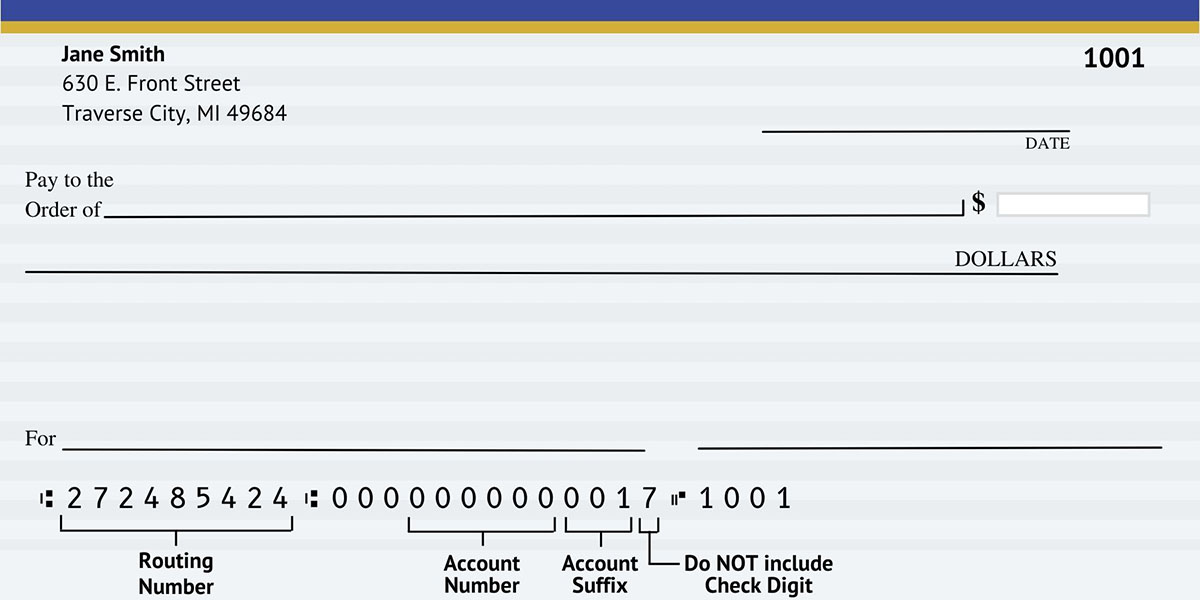

Finance
What Is Retail Banking
Published: October 13, 2023
Discover the ins and outs of retail banking and how it relates to finance. Explore various banking services, products, and strategies for effective money management.
(Many of the links in this article redirect to a specific reviewed product. Your purchase of these products through affiliate links helps to generate commission for LiveWell, at no extra cost. Learn more)
Table of Contents
Introduction
Retail banking is a crucial component of the financial services industry that is primarily focused on serving individual customers and small businesses. It encompasses various activities such as deposit-taking, lending, and providing a range of financial products and services. Retail banks play a vital role in facilitating financial transactions, offering convenience, and promoting financial inclusion for individuals and households.
In today’s fast-paced and interconnected world, retail banking is more than just a physical branch presence. It has evolved to incorporate digital platforms and mobile banking applications, offering customers the convenience of managing their finances anytime and anywhere. With the advent of technology, retail banks have been able to enhance customer experience, improve efficiency, and expand their reach.
One of the key features of retail banking is the ability to offer personalized financial solutions tailored to individual customers’ needs. This includes various types of loans such as mortgages, auto loans, and personal loans, as well as credit cards, savings accounts, and investment options. Retail banks also provide services like money transfers, bill payments, and foreign exchange to cater to the diverse financial needs of their customers.
The retail banking sector plays a vital role in driving economic growth by providing the necessary financial resources to individuals and small businesses. It promotes financial stability by offering safe and secure deposit options for customers while channeling funds into productive investments. Retail banks also act as intermediaries, facilitating the flow of funds between savers and borrowers, contributing to the overall economic development.
Furthermore, retail banking serves as the first point of contact for individuals seeking financial advice and guidance. Whether it’s planning for retirement, buying a home, or starting a business, retail banks offer financial expertise and guidance to help customers make informed decisions. They assist in assessing financial risks, evaluating investment options, and ensuring long-term financial well-being.
While retail banking and commercial banking may seem similar, there are distinct differences between the two. Retail banking primarily focuses on individual customers and small businesses, offering a wide range of personalized financial services. Commercial banking, on the other hand, caters to larger businesses and corporations, providing services such as treasury management, corporate lending, and investment banking.
In the next sections, we will explore in more detail the services offered by retail banks, the importance of retail banking in the economy, the differences between retail banking and commercial banking, as well as the emerging trends and challenges facing the retail banking industry.
Definition of Retail Banking
Retail banking, also known as consumer banking or personal banking, refers to the financial services provided by banks to individual customers and small businesses. It involves a range of activities aimed at meeting the financial needs and goals of individuals, households, and small businesses.
The primary focus of retail banking is on providing banking services and products to individual consumers, including deposit accounts, loans, credit cards, and investment options. Retail banks also offer services such as money transfer, bill payment, and foreign currency exchange.
Retail banks serve as the main point of contact for individuals who require banking services for their personal financial management. They provide a variety of banking solutions to help individuals manage their day-to-day financial transactions, save money, and achieve their financial goals.
One of the key services offered by retail banks is the provision of deposit accounts. These accounts allow customers to safely store their money, earn interest, and access funds whenever they need them. Retail banks offer various types of deposit accounts, such as savings accounts, current accounts, and fixed deposit accounts, each with its own features and benefits.
Another important service offered by retail banks is lending. Retail banks provide loans to customers for various purposes, including home mortgages, auto loans, personal loans, and small business loans. These loans allow individuals to finance their needs and aspirations, whether it’s buying a home, starting a business, or covering unexpected expenses.
Retail banks also play a crucial role in providing payment solutions to individuals. They issue debit cards and credit cards that enable customers to make purchases and payments conveniently. In addition, retail banks often offer online and mobile banking services, allowing customers to manage their accounts and make transactions digitally from their computers or smartphones.
Investment services are another important component of retail banking. Retail banks provide customers with opportunities to invest their savings in various financial instruments, such as mutual funds, stocks, bonds, and other investment products. These investment services help individuals grow their wealth and plan for long-term financial security.
In summary, retail banking encompasses a wide range of financial services provided by banks to individual consumers and small businesses. It plays a crucial role in meeting the financial needs of individuals, facilitating day-to-day transactions, providing lending options, and offering investment opportunities. Retail banks are at the forefront of providing personalized and accessible banking services to customers, helping them manage their finances and achieve their financial goals.
Services Offered by Retail Banks
Retail banks offer a wide range of financial services to cater to the diverse needs of individual customers and small businesses. These services aim to provide convenient and accessible solutions for managing finances, making transactions, and achieving financial goals. Here are some key services offered by retail banks:
- Deposit Accounts: Retail banks provide various types of deposit accounts, such as savings accounts, current accounts, and fixed deposit accounts. These accounts offer a safe and secure place for customers to deposit their money, earn interest, and access funds when needed. Deposit accounts may also come with additional features like online banking, mobile banking, and overdraft facilities.
- Lending: Retail banks offer a range of loan products to help individuals and small businesses finance their needs. These loans may include mortgages for purchasing homes, auto loans for buying vehicles, personal loans for funding personal expenses, and small business loans for entrepreneurs. Retail banks assess the creditworthiness of borrowers and provide competitive interest rates and repayment terms.
- Credit Cards and Payment Solutions: Retail banks issue credit cards that allow customers to make purchases and payments with a line of credit. These credit cards come with various features like cashback rewards, travel benefits, and purchase protection. Retail banks also offer debit cards that allow customers to access funds directly from their bank accounts for making transactions at ATMs and merchants.
- Online and Mobile Banking: With the advancement of technology, retail banks have embraced digital platforms to provide convenient banking solutions. Online banking and mobile banking applications allow customers to manage their accounts, check balances, transfer funds, pay bills, and conduct transactions from the comfort of their homes or on-the-go. These platforms ensure 24/7 access to banking services.
- Investment Services: Retail banks offer investment services to help customers grow their wealth and plan for their future. These services include access to mutual funds, stocks, bonds, and other investment products. Retail banks provide tools and resources to guide customers in making informed investment decisions based on their risk tolerance and financial goals.
- Financial Planning and Advisory: Retail banks often have financial advisors who provide guidance and support to individuals in managing their finances. They assist customers in setting financial goals, creating budgets, and developing strategies for long-term financial success. Financial advisors also offer advice on retirement planning, education funding, and wealth management.
- Foreign Exchange and International Banking: Retail banks facilitate foreign exchange services, allowing customers to exchange currencies for travel, business, or investment purposes. They provide competitive exchange rates and assist with international money transfers. Retail banks may also offer specialized services for expatriates, foreign students, or individuals with international banking needs.
These services are designed to meet the financial needs of retail customers and small businesses, providing convenience, accessibility, and expertise. Retail banks play a crucial role in helping individuals manage their finances, achieve their financial goals, and navigate various financial situations throughout their lives.
Importance of Retail Banking in the Economy
Retail banking plays a pivotal role in the economy by providing essential financial services to individuals and small businesses. The activities of retail banks have a significant impact on economic growth, financial stability, and financial inclusion. Here are some key reasons why retail banking is important in the economy:
- Access to Financial Services: Retail banking ensures that individuals and small businesses have access to a wide range of financial services. This empowers them to manage their finances, make transactions, and pursue their economic aspirations. By providing convenient and accessible financial solutions, retail banks contribute to the inclusive growth of the economy.
- Financial Intermediation: Retail banks act as intermediaries between savers and borrowers. They mobilize deposits from individuals and channel these funds towards productive investments. By facilitating the flow of funds in the economy, retail banks contribute to capital formation and economic development.
- Support for Small Businesses: Small businesses are vital for economic growth. Retail banks play a crucial role in providing financing and banking services to small businesses, enabling them to grow, create jobs, and contribute to the overall economy. Retail banks offer small business loans, credit lines, and expertise to help entrepreneurs thrive.
- Facilitation of Economic Transactions: Retail banks provide services like payment processing, money transfers, and online banking solutions that facilitate economic transactions. By offering safe, secure, and efficient payment systems, retail banks enable individuals and businesses to conduct transactions smoothly, supporting the functioning of the economy.
- Financial Stability: Retail banks contribute to financial stability by offering deposit accounts that provide a safe haven for people’s savings. These accounts are insured by regulatory bodies, providing confidence and stability to depositors. In times of economic turbulence, retail banks play a crucial role in maintaining the integrity of the financial system.
- Consumer Protection: Retail banks are subject to various regulations that safeguard the interests of consumers. These regulations ensure fair practices, transparency, and protect customers against fraudulent activities. The presence of retail banks with strong customer protection mechanisms enhances trust and confidence in the financial system.
- Financial Inclusion: Retail banking plays a vital role in promoting financial inclusion by providing banking services to underserved populations. It offers basic financial products and services to people who have limited access to banking facilities, thereby empowering them to save, borrow, and participate in the formal financial system.
In summary, retail banking is crucial for the economy as it provides access to financial services, facilitates economic transactions, supports small businesses, ensures financial stability, protects consumers, and promotes financial inclusion. Retail banks are vital institutions that contribute to the overall well-being and growth of the economy by fulfilling the diverse financial needs of individuals and small businesses.
Differences between Retail Banking and Commercial Banking
While both retail banking and commercial banking are important components of the financial services industry, there are significant differences between the two in terms of their target customers, services offered, and business focus. Understanding these differences can help clarify the distinct roles each plays in the economy. Here are some key differences between retail banking and commercial banking:
- Target Customers: Retail banking primarily focuses on serving individual customers and small businesses. The target customers of retail banks include individuals seeking banking services for personal financial needs, such as savings accounts, loans, and investment products. Commercial banking, on the other hand, caters to larger businesses and corporations, offering services like treasury management, corporate lending, and investment banking.
- Services Offered: Retail banking provides a wide range of personalized financial services to individual consumers. These services typically include deposit accounts, lending products such as mortgages and personal loans, credit card facilities, and investment options. In contrast, commercial banking focuses on providing financial services tailored to the needs of businesses, such as commercial loans, trade finance, cash management solutions, and capital market services.
- Risk Assessment: Retail banks mainly assess the creditworthiness of individual consumers while considering factors such as credit history, income, and employment. They evaluate the financial stability and repayment capacity of the individual borrowers to manage risks. Commercial banks, on the other hand, assess the creditworthiness of businesses by analyzing their financial statements, business plans, and potential risks associated with the industry in which they operate.
- Customer Relationships: Retail banking focuses on building and maintaining long-term relationships with individual customers. Retail banks often have branches in local communities to provide personalized services and foster a sense of trust and familiarity with their customers. Commercial banking, however, relies more on contractual relationships and professional interactions with businesses. Relationship managers in commercial banking work closely with business clients to understand their unique financial needs and provide tailored solutions.
- Regulatory Environment: Retail banking is subject to consumer protection regulations and banking laws that aim to safeguard the interests of individual customers. The regulatory framework for retail banking focuses on ensuring fair practices, transparency, and protecting consumers from fraudulent or predatory activities. Commercial banking operates in a regulatory environment that emphasizes financial stability, risk management, and compliance with regulations related to corporate governance, lending practices, and capital requirements.
- Profitability: Retail banking generates revenue from various sources, including interest income from retail loans and deposits, fees from banking services, and income from investment products and credit card operations. Commercial banking, on the other hand, generates income primarily through corporate lending, investment banking activities, treasury services, and transactional fees associated with commercial transactions.
While there may be some overlap in services provided by retail and commercial banks, the key differences lie in the target customers, types of services offered, risk assessment approaches, customer relationships, regulatory environments, and profitability models. Retail banks focus on serving individual customers and small businesses with personalized financial services, while commercial banks cater to larger businesses with corporate finance and banking solutions. Understanding these differences helps ensure that the unique needs of both retail and commercial customers are met effectively by financial institutions.
Trends and Challenges in Retail Banking
Retail banking is constantly evolving to meet the changing needs and preferences of customers in a rapidly advancing digital age. Emerging trends and technological advancements are reshaping the retail banking landscape, while presenting new challenges for banks to navigate. Here are some of the key trends and challenges in retail banking:
- Digital Transformation: The adoption of digital technology has revolutionized the retail banking industry. Customers now expect seamless, user-friendly digital banking experiences that offer convenience, speed, and security. Retail banks are investing in mobile banking applications, online banking platforms, and innovative digital services to stay competitive and meet customer expectations in the digital era.
- Enhanced Customer Experience: Customer experience has become a critical focus area for retail banks. Banks are leveraging technology to offer personalized services, proactive financial advice, and real-time support. Advanced analytics and artificial intelligence are being used to understand customer behavior, provide customized product recommendations, and deliver targeted marketing campaigns.
- Open Banking: Open banking initiatives are being implemented in many countries, allowing customers to share their banking data securely with third-party providers. This enables customers to access a wider range of financial products and services from multiple providers through a single platform. Retail banks must adapt to this trend by offering open APIs, collaborating with fintech companies, and ensuring secure data-sharing practices.
- Regulatory Compliance: Regulatory compliance remains a significant challenge for retail banks. Banks must adhere to various regulations related to customer data protection, anti-money laundering, and know-your-customer requirements. Meeting these compliance obligations requires robust systems, processes, and continuous monitoring to ensure adherence to changing regulatory requirements.
- Cybersecurity: The increasing prevalence of cyber threats poses a significant challenge for retail banks. With the rise of digital banking and the storage of sensitive customer information, banks must invest heavily in cybersecurity measures to protect customer data and prevent fraud. Retail banks need to implement robust security protocols, conduct regular vulnerability assessments, and educate customers about safe online banking practices.
- Adapting to New Competitors: Retail banks are facing competition from non-traditional players, such as fintech startups, big tech companies, and neobanks. These disruptive entrants are introducing innovative digital solutions and challenging traditional banking models. Retail banks must stay agile, collaborate with fintech partners, and leverage their existing customer base to remain competitive in the evolving banking landscape.
- Financial Inclusion: The increasing focus on financial inclusion presents both an opportunity and a challenge for retail banks. Banks need to develop strategies to reach underserved populations and provide banking services to those who previously had limited access. This may involve partnerships with community organizations, leveraging mobile banking technology, and creating tailored products and services to address specific needs.
These trends and challenges require retail banks to embrace technological advancements, enhance customer engagement, ensure compliance with regulations, strengthen cybersecurity measures, adapt to new competitors, and promote financial inclusion. By proactively addressing these challenges and capitalizing on emerging trends, retail banks can stay relevant, deliver superior customer experiences, and foster long-term growth in a rapidly evolving industry.
Conclusion
Retail banking plays a vital role in providing essential financial services to individuals and small businesses, contributing to economic growth, financial stability, and financial inclusion. The services offered by retail banks, including deposit accounts, lending options, payment solutions, investment services, and financial advice, cater to the diverse financial needs and goals of customers.
As technology continues to advance, retail banking is undergoing a digital transformation, embracing online and mobile banking platforms to offer customers convenient and personalized experiences. Open banking initiatives are also reshaping the industry, allowing customers to access a wide range of financial products and services through third-party providers.
However, retail banks also face challenges, such as regulatory compliance, cybersecurity risks, and competition from non-traditional players. Adapting to these challenges requires banks to invest in robust systems, stay updated with evolving regulations, and continuously enhance security measures.
In conclusion, retail banking is an integral component of the financial services industry that serves as a bridge between individuals, small businesses, and the broader economy. By providing access to financial services, facilitating economic transactions, supporting small businesses, and promoting financial inclusion, retail banks contribute to the overall well-being and growth of the economy.
To thrive in this dynamic environment, retail banks must embrace digital transformation, prioritize customer experience, ensure regulatory compliance, strengthen cybersecurity measures, and adapt to emerging trends. By doing so, retail banks can position themselves for long-term success, delivering value to customers and driving economic prosperity.














